
|

|
|||||
|
Landmarks ~
Churches ~
Pubs ~
Shops ~
Amenities ~
Dwellings ~
Events ~
Schools ~
Sports
Industrial ~ Transport ~ Folklore ~ Families
~ Gallery - Transport ~
Rail
~
Gornal Halt
Gornal Halt served Gornal Wood village for a short time during the 1920's,
although the Halt was a considerable distance away from Gornal - at Shut End, Pensnett.
The line formed part of the Great Western Wombourne branch. Apart from this brief spell in the 1925-1933 period, the line was primarily used for freight traffic.
The Passenger service; the G.W.R. inaugurated a new passenger service on Monday
11th May 1925, between Dunstall Park (Wolverhampton) and Brettle Lane (Brierley Hill)
The first train left Wolverhampton at 6.55 a.m. with station stops at Tettenhall, Wombourne and Himley, with Halts at Compton, Penn, Gornal, Pensnett, Bromley and Brockmoor. The twelve mile journey takes 50 minutes when the train stops at every station and halt. The passenger side of the enterprise was short-lived, the last service ran on 31 October 1932, after just seven years the service proved unviable, though the line continued to run freight traffic. Occasional passenger traffic ran after this time including transport to the Himley Hall Garden Parties. 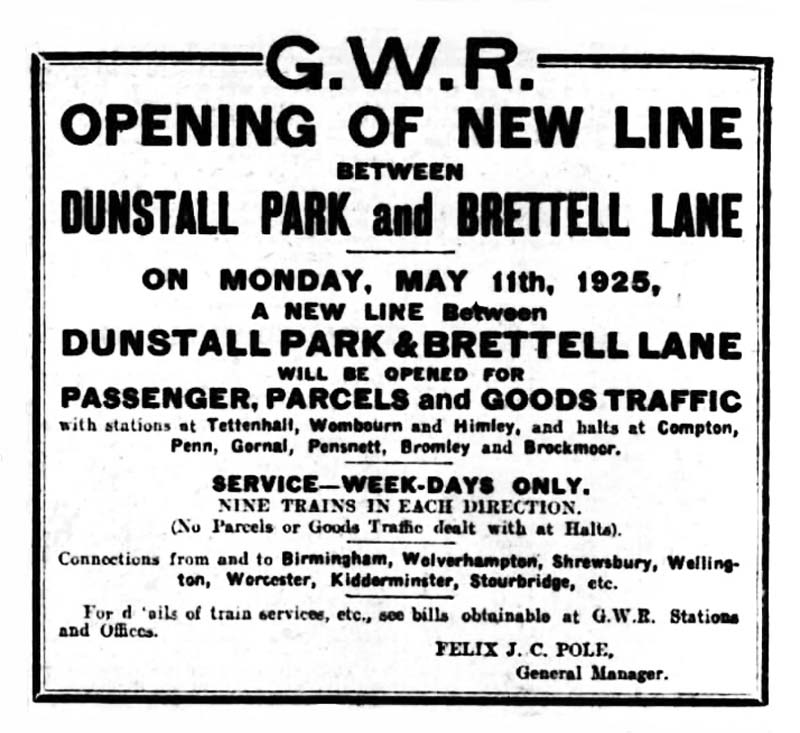
Spurs off this line served Baggeridge and other local collieries and works in the Pensnett and Gornal area.
The Wombourne Branch continued to run freight between Tettenhall and Kingswinford until 1965, the Baggeridge spur closed in 1969.  Gornal Halt, 1954 Gornal Halt, 1954
Photo: Michael Hale
Not many pictures of Gornal Halt exist, the above photo overlooks the Halt from the Cinder Road bridge and clearly shows
the derelict 'Pagodas' and remains of the platform, the engine pushes a string of coal wagons probably from Baggeridge Colliery,
the bridge in the background is now gone but used to carry the Tansley Green Road over the railway.
Gornal Halt consisted of standard 250 foot platforms either side of a double track, small pagoda roofed waiting rooms stood on each platform.
The GWR 'Pagoda' buildings provided a very basic waiting room, these small huts were around 20' x 8' being a single room waiting area for passengers with perhaps some storage for bicycles. The prefabricated pagoda roofs were of a very distinctive style peculiar to the GWR, both walls and the roof were made of corrugated iron, these Chinese style 'tin' roofs gave rise to the term 'Pagoda', at the Halt a window was situated either end of the hut looking up and down the track with a door facing the track which completed the simple layout.
The passenger service was served by steam powered railcars or railmotors, these were single coach units with an integral steam power unit,
the railcars could carry forty or so passengers, the railcars were not known for their speed, comfort or cleanliness!
Fares would be paid to the guard when boarding the train as there would not normally have been rail staff at the Halt.
1876: Midland Counties Evening Express, December 1st.
The branch line was built by the Oxford, Worcester and Wolverhampton Railway Company around 1860 mainly to serve the industrial areas of Gornal, Kingswinford and Brierley Hill, the OWW was later absorbed into the Great Western Railway.
The OWW branch left the main line at Kingswinford Junction after passing through Gornal, Himley, Wombourne and Tettenhall, re-joined the mainline at Oxley junction - just before the Wolverhampton Low Level Station.
All signs of the old Halt are gone, the track bed is now covered by a recent housing development at Shut End, and the track would have crossed the road exactly where the new traffic island
intended for the new estate, the road leading to the new houses is aptly named 'Great Western Way'.
At Gornal, the single track line originally crossed Stallings Lane, but later a cutting was excavated
alongside the single track and a double track bed laid in the cutting,
the original old track and crossing being removed and replaced with a road bridge over the railway.
After this the track swept away towards Pensnett Halt under Tansley Green Road at Lenches Bridge.
During the 19th Century, there was various proposals put forward to bring a rail line through Gornal to
Sedgley, such as the one reported in the press cutting right.
It seems that however, the topography of the Gornal and Sedgley district, was not at all suitable to lay track, as parts of Lower Gornal at 600 feet, and Sedgley 1000 feet above the surrounding area, the inclines would not have been feasible. ~
The Mineral Railway.
Dewsbury Chronicle, 15 September, 1877
A 19th century mineral railway track crossed Stallings Lane at Sandfields Bridge, passing the old Candle Works at Gornal Wood and continued on behind the Forge Inn.
This branch line joined the GWR Wombourne line on the outskirts of Gornal.
The line predominately used to transport coal to the Round Oak Steel works from local collieries including Baggeridge up until the 1960s.
There was an old engine shed and water tank adjacent to where it ran behind the Forge Inn shown on map of 1880.
The shed was enlarged by the early 1900s and was still shown on a 1950s map, the shed was derelict by 1963.
From the engine shed there was a tramway which swept away and ran along parallel to Cinder Road which served the 'incline' to Himley Colliery Pit no. 18
just off Mount Lane around 1900, gravity would have taken the full coal tubs down the tramway, with horses used to return the empty tubs.
Pit No.18 was called Coopers Bank Colliery Pit no. 1 on an 1880s map, but appears to be one and the same but minus the incline and railway,
the rail spur at that time terminated at the Old Park Colliery, just off Cinder Road.
~
|
|
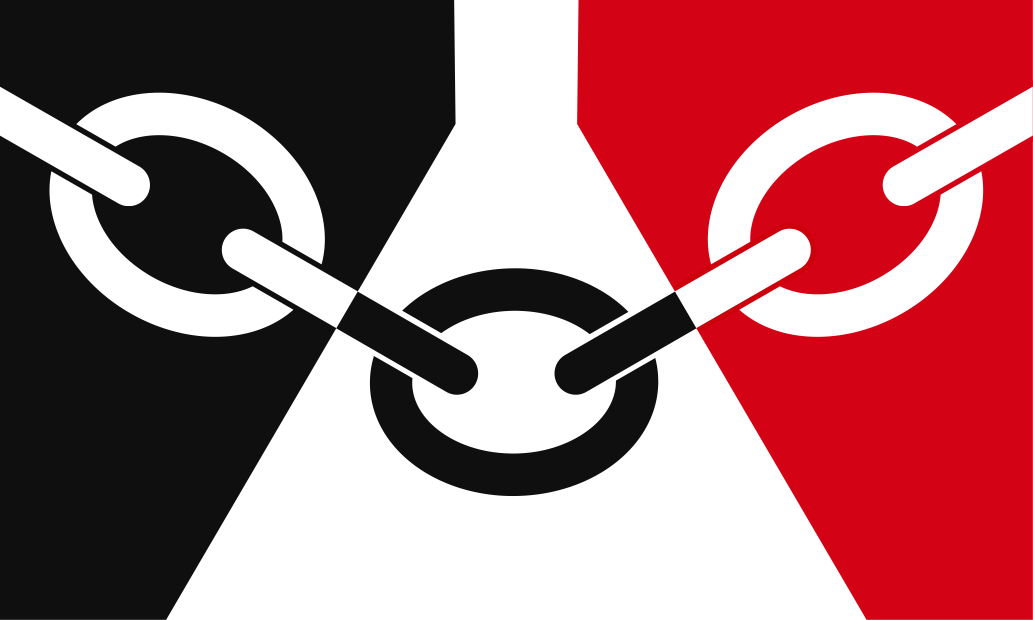
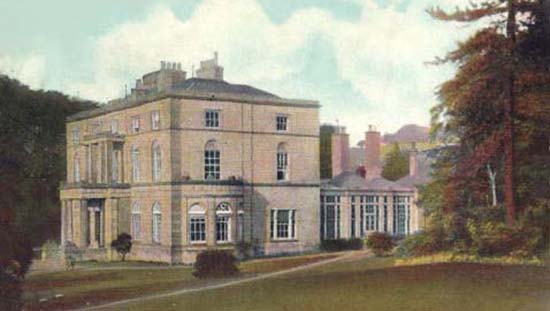
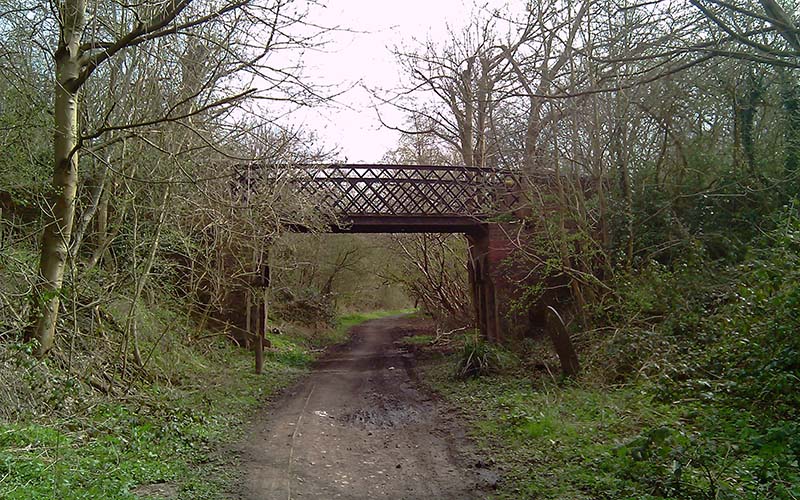 Footbridge over the track at the Forge Inn.
Footbridge over the track at the Forge Inn.
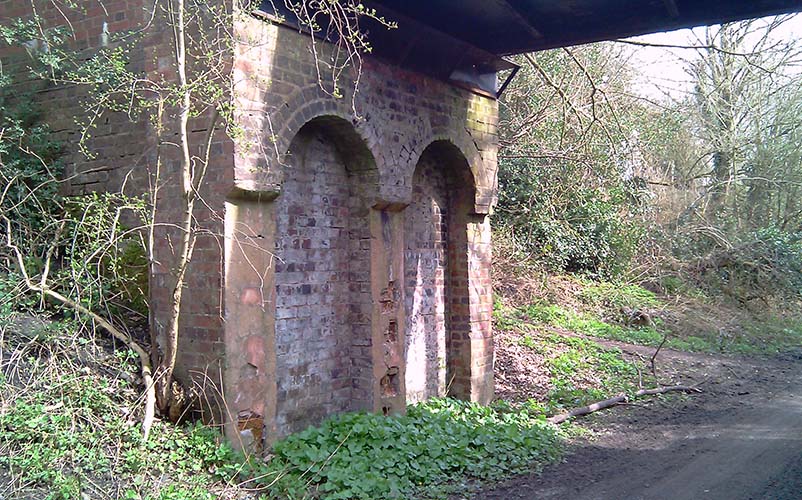 Footbridge support detail.
Footbridge support detail.


